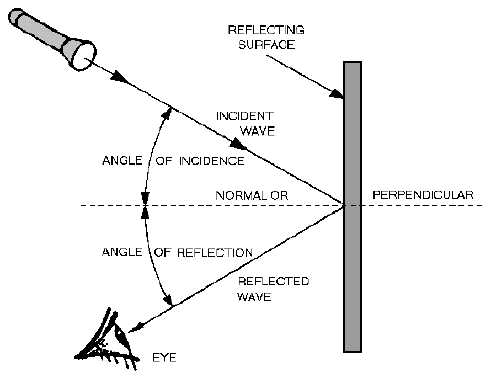1-13
Other important characteristics of wave motion are reflection, refraction, diffraction, and the Doppler
effect. Big words, but the concept of each is easy to see. For ease of understanding, we will explain the
first two characteristics using light waves, and the last two characteristics using sound waves. You should
keep in mind that all waves react in a similar manner.
Within mediums, such as air, solids, or gases, a wave travels in a straight line. When the wave leaves
the boundary of one medium and enters the boundary of a different medium, the wave changes direction.
For our purposes in this module, a boundary is an imaginary line that separates one medium from another.
When a wave passes through one medium and encounters a medium having different characteristics,
three things can occur to the wave: (1) Some of the energy can be reflected back into the initial medium;
(2) some of the energy can be transmitted into the second medium where it may continue at a different
velocity; or (3) some of the energy can be absorbed by the medium. In some cases, all three processes
(reflection, transmission, and absorption) may occur to some degree.
Reflection
REFLECTION WAVES are simply waves that are neither transmitted nor absorbed, but are reflected
from the surface of the medium they encounter. If a wave is directed against a reflecting surface, such as a
mirror, it will reflect or "bounce" from the mirror. Refer to figure 1-9. A wave directed toward the surface
of the mirror is called the INCIDENT wave. When the wave bounces off of the mirror, it becomes known
as the REFLECTED wave. An imaginary line perpendicular to the mirror at the point at which the
incident wave strikes the mirror’s surface is called the NORMAL, or perpendicular. The angle between
the incident wave and the normal is called the ANGLE OF INCIDENCE. The angle between the reflected
wave and the normal is called the ANGLE OF REFLECTION.
Figure 1-9.—Reflection of a wave.


